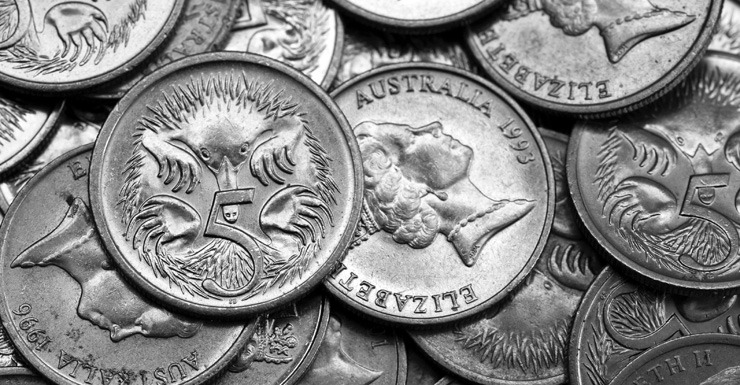US axing reignites debate on future of our five cents
America’s decision to stop minting its one-cent coin could raise fresh doubts for the future of Australian currency’s smallest denomination – which costs more than double its value to make.
Source: X/Michael Stratford
US President Donald Trump said in February he was ordering Treasury to halt what he called the “wasteful” minting of pennies, and this week marks the production of the final circulating one-cent coin.
On Wednesday (local time), US Treasurer Brandon Beach visited the Philadelphia Mint to strike the final five circulating one-cent coins or pennies, ending 232 years of production in the US.
While Australia did away with its own one-cent coin 33 years ago, the feasibility of the five-cent piece has been debate in recent years.
The US Treasury said rising production costs, and rapidly changing consumer habits and technology made production of pennies “financially untenable” and unnecessary, noting that it cost US3.69 (5.64 cents) cents to make each penny, up from US1.42 cents a decade ago.
Suspending their production is expected to save the US Mint about $US56 million ($86 million) a year.
The same argument can be made about Australia’s five-cent coin.
While the cost of producing a five-cent piece fluctuates with the price of its contributing metals – predominately copper and nickel – Australian Mint CEO Leigh Gordon in 2022 revealed it cost 12 cents to make every five-cent coin.
You might like
The message from the mint regarding the coin’s future is mixed at best.
Gordon at the time said it was committed to the five-cent piece for the foreseeable future.
“That’s not the only coin that we produce at a loss. It’s certainly the same for the 10 and the 20 [cent coins],” he said.
“That is part of the service that has to provide to the Australian public. Our aim is about doing that as efficiently and as effectively as we certainly can.”
However, two years earlier, then Royal Mint CEO Ross MacDiarmid predicted the “graceful death” of five and 10-cent coins “within the next decade”.
“We’ve worked on the basis that somewhere in the next five to 10 years, the five-cent coin will probably just cease to be used,” he said in 2020.
Part of the fate of the five-cent piece rests with Australia’s growing move toward a cashless economy, thanks to the rise in eftpos payments and digital wallets.
Last year Dr Angel Zhong, associate professor of finance at RMIT University, said it was likely that cash payments will be as little as 1-2 per cent of all payments within a few years.
Stay informed, daily
“We’ve seen a lot of businesses starting to refuse cash as payment and legally that is allowed,” she said.
Zhong said there were legitimate concerns about moving away from monetary notes and coins to completely electronic payments.
“For example, internet outages, infrastructure and privacy concerns, as well as cyber attacks,” she said.

While used increasingly less, it’s loss could raise prices. Photo: Getty
“There are also vulnerable groups, such as the older generations, who are not tech savvy, as well as those in rural areas.”
Theo Foukkare, CEO of the Australian Association of Convenience Stores, told ABC Radio in January that 90 per cent of transactions are digital.
But he warned that, given that the rising cost of living, losing the five-cent coin would drive the overall price of products up by the same amount.
“It might only sound like a little bit, but if you add over the year, when all your transactions had been rounded up, I think it’s actually going cost everyone in their hip pocket,” he said.
The five-cent piece, featuring its iconic echidna on the front, came into circulation with the advent of Australia’s decimal currency in 1966.
The first 30 million coins were struck at the British Royal Mint followed by an additional to 45.4 million at the Royal Australian Mint in Canberra.
In 2024, just 10 million of the coins were minted – the first featuring King Charles instead of Queen Elizabeth – after no five-cent pieces were produced in 2023.








